From mud to mirrors: Complex ion equilibria and Tollen's Test
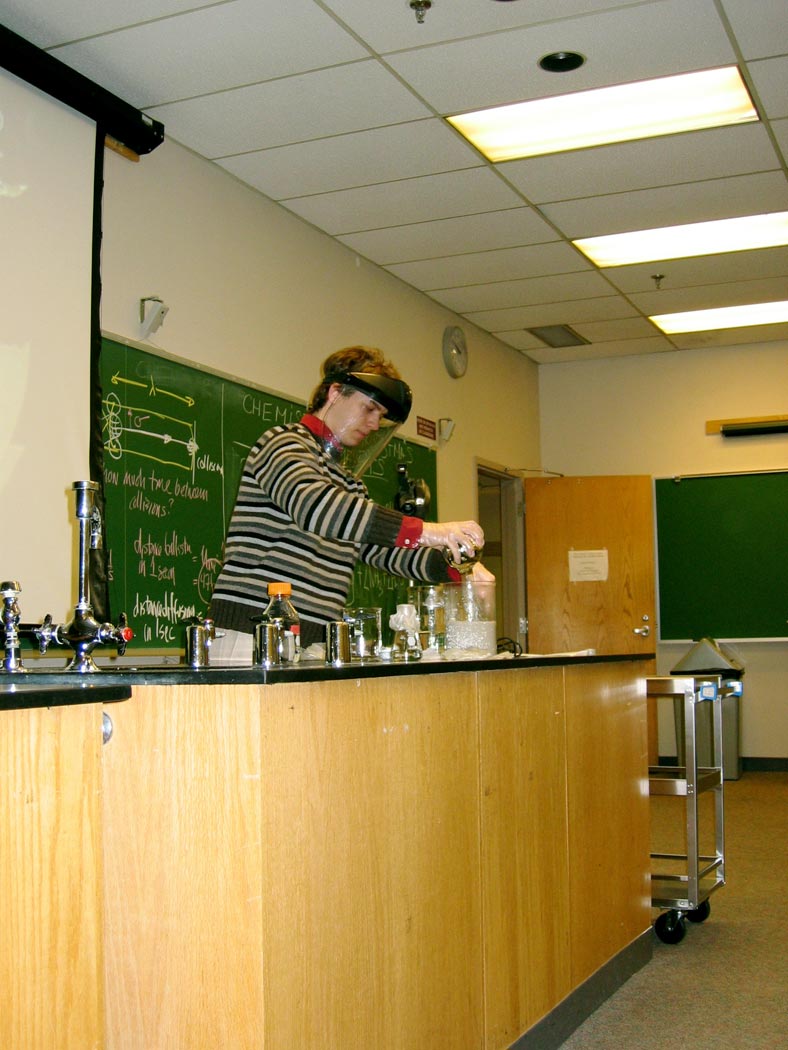
A dark brown precipitate forms in a clear solution. The precipitate is made to disappear, then reappear. Ultimately, the precipitate is magically transformed to precious metallic silver.
Ingredients: silver nitrate, ammonium hydroxide, ammonia, potassium hydroxide, sucrose, nitric acid, ethyl alcohol
Procedure: A complete recipe follows.
1. Prepare the developing solution by adding 90 grams of table sugar to 1 L of boiling water.
Add 5 mL of concentrated nitric acid.
Boil for 5 minutes. After the mixture cools, add 175 mL of 100% proof ethyl alcohol. Place developing solution in a labeled bottle.
2. Prepare reactive solution of silver nitrate and potassium hydroxide. The volume of solution will depend upon the size of the flask that will be silvered.
For a 500 mL flask, prepare solution of 250 mL water with 7 grams silver nitrate. Separately, add 3.5 grams of potassium hydroxide in 200 mL of water.
3. Prepare a 45 C water bath that is large enough to hold the flask to be silvered.
4. Pour reactive solution into the flask to be silvered.
5. For every 500 mL of reactive solution, add 30 mL of developing solution. Immediately immerse the flask in hot water bath, constantly swirling flask. Allow flask to remain in bath for 5 minutes.
6. The silver coating is initially fragile. Gently pour remaining mixture out of the flask. Deactivate mixture with hydrochloric acid.
NOTE: The solution should not be stored for more than 2 hours, as it will turn into a grenade. To stabilize the solution, mix it with a 5% solution of hydrochloric acid in a 1:1 ratio by volume.
7. Gently flush any remaining residue from the flask using distilled water. Rinse inside of flask with acetone.
Understanding:
This demonstration is a tour de force presentation of the chemistry of complex ion formation, as well as a fascinating meeting of the inorganic and organic worlds that is best described as magical.
The reactive solution is a mixture of soluble silver nitrate and ammonium hydroxide. It is prepared in a series of steps that reveal rich reactive chemistry of complex ion formation.
The initial solution contains silver nitrate and a small amount of ammonium hydroxide. As the ammonium hydroxide solution is added, the reactive solution first turns a muddy brown due to the formation of a silver(I) oxide precipitate
2 Ag+ (aq) + 2 OH- (aq) → Ag2O (s) + H2O (l)
Ag2O (s) + 4 NH3 (aq) + H2O (l) → 2 [Ag(NH3)2]+ (aq) + 2 OH- (aq)
2 [Ag(NH3)2]+ (aq) + 2 OH- (aq) → Ag2O (s) + 4 NH3 (aq) + H2O (l)
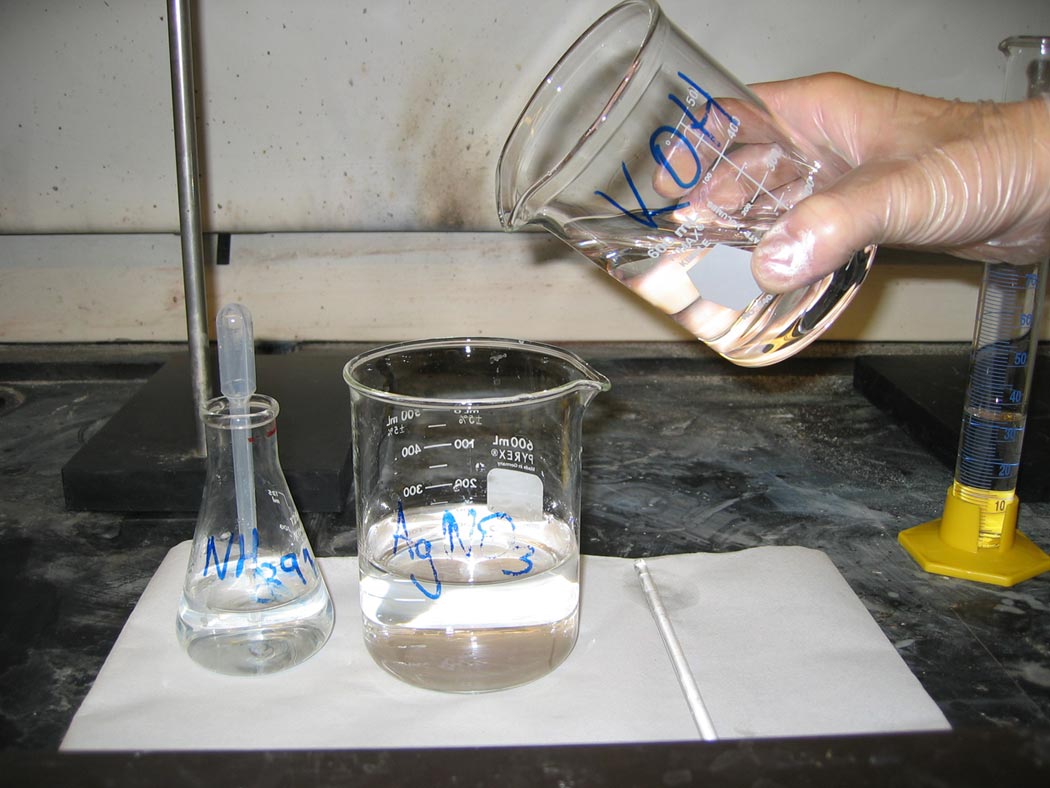
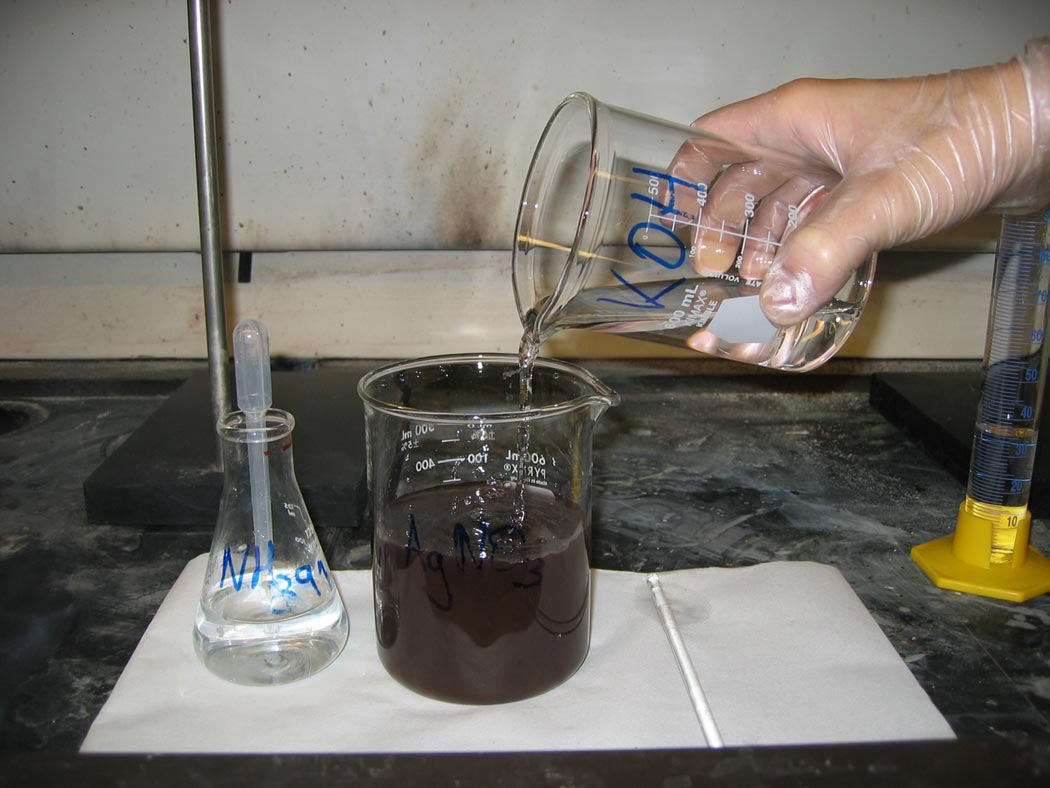
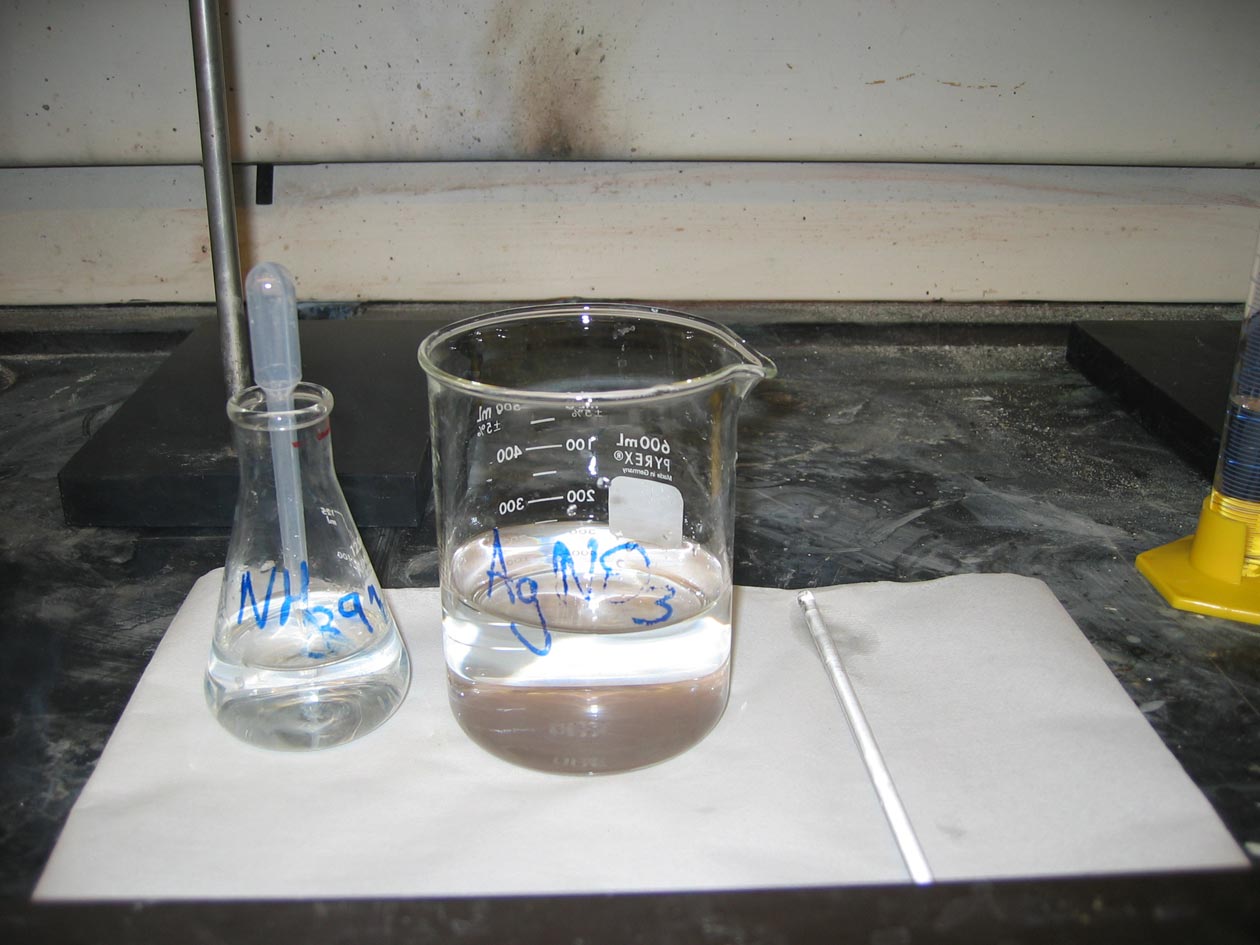
NH4+ (aq) + OH- (aq) → NH3 (aq) + H2O (l)
The rising ammonia concentration pushes the equilibrium of the formation of silver diammine complex ion toward product. That is the final step in the preparation of the reactive solution.
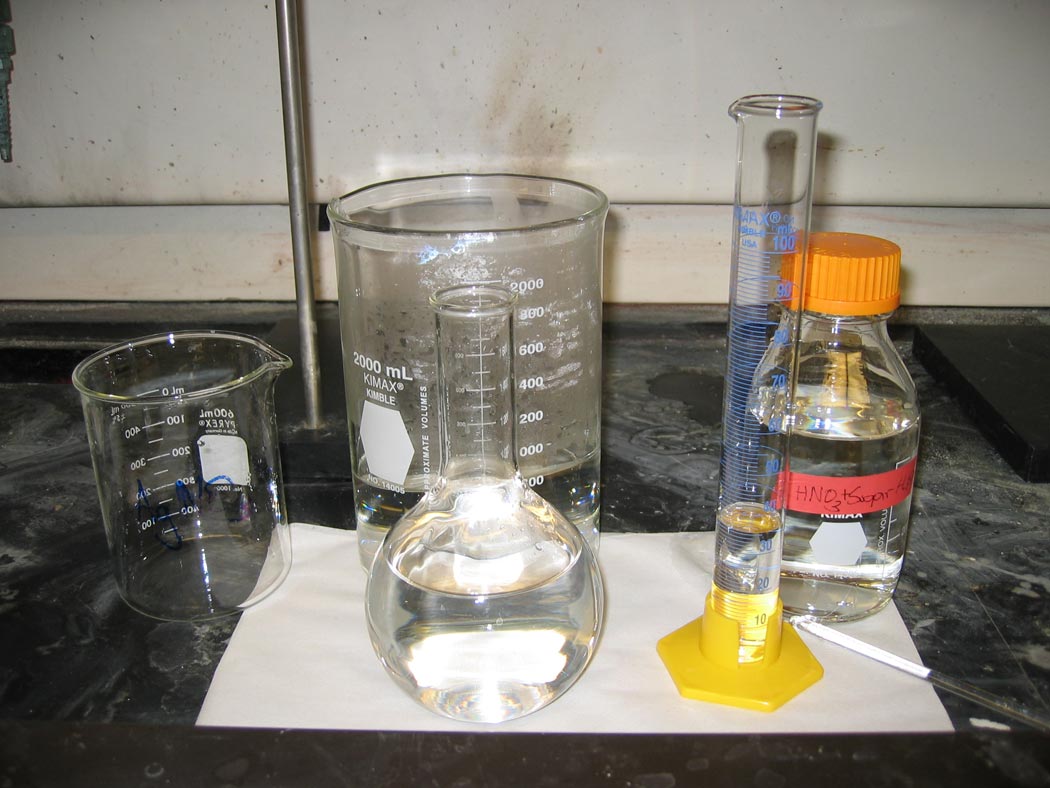
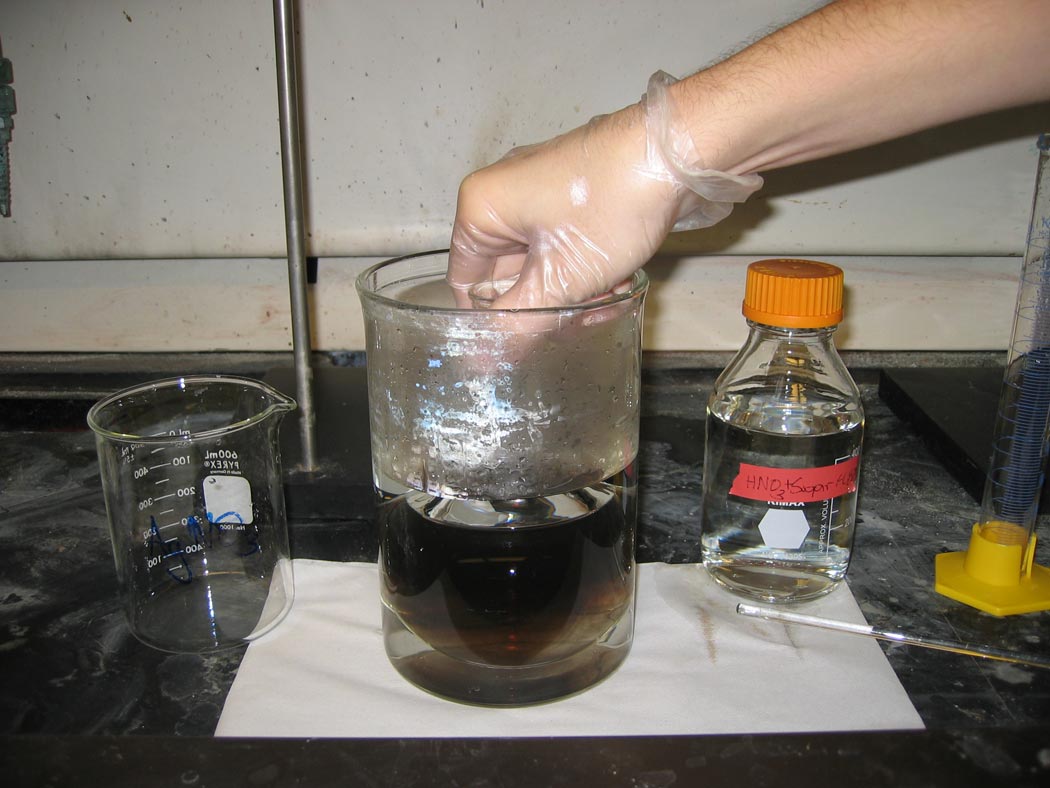
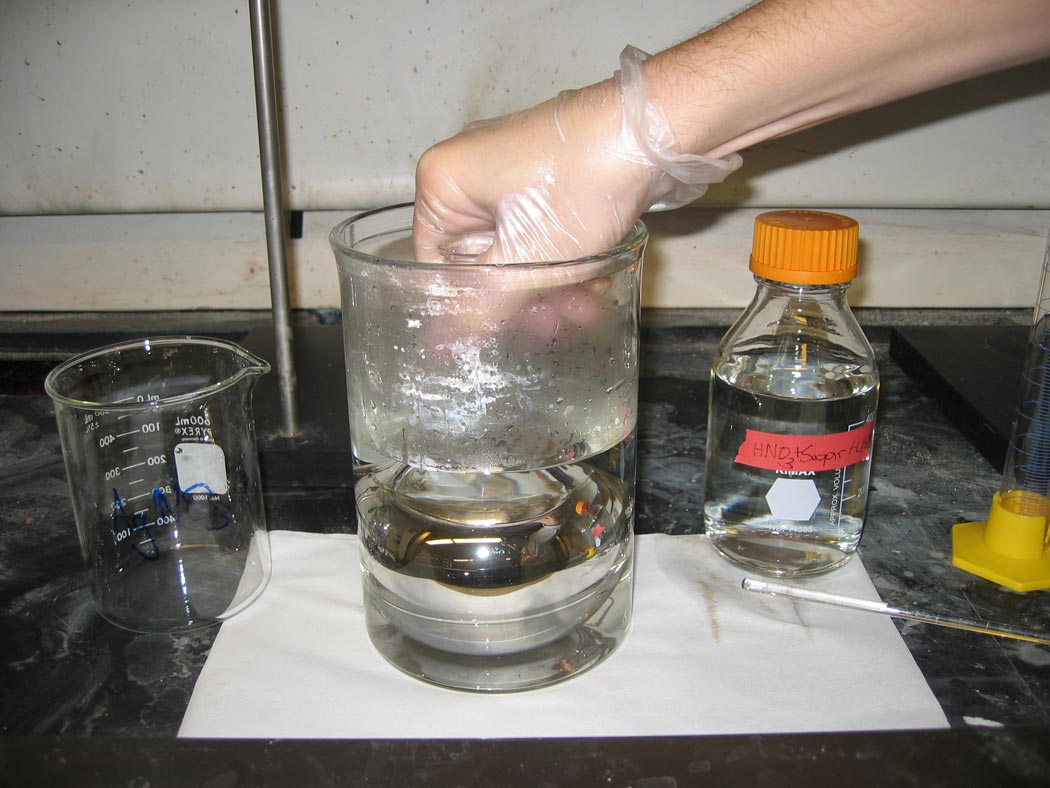
The Tollen's Test for the presence of organic aldehyde in solution exploits the redox chemistry of the argentous ion. In acidic solution, glucose, C6H12O6, assumes a linear chain form with a terminal aldehyde group, CHO. The addition of glucose and acid to the basic solution of the silver diammine complex ion leads to an oxidation reaction that converts the terminal aldehyde group of glucose to a carboxylic acid group
(C5H11O5)-CHO (aq) + 2 OH- (aq) ↔ (C5H11O5)-COOH (aq) + H2O (l) + 2 e-
This oxidation is coupled to the reduction of the argentous ion to metallic silver[Ag(NH3)2]+ (aq) + e- → Ag (s) + 2 NH3 (aq)
Overall, the reaction can be represented by the balanced equation(C5H11O5)-CHO (aq) + 2[Ag(NH3)2]+ (aq) + 2 OH- (aq) ↔ (C5H11O5)-COOH (aq) + 2 Ag (s) + 4 NH3 (aq) + H2O (l)
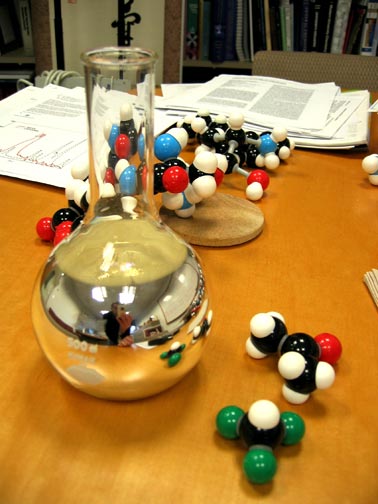
The addition of the developing solution to the reactive solution leads to the immediate reformation of the brown precipitate of silver(I) oxide, Ag2O. As the flask is swirled, the reduction of the silver ion occurs. The metallic silver leaves the solution, depositing on the flask surface to magically transform the clear glass to a shining mirror. The silvering of the flask indicates the presence of reactive aldehyde in the solution.
The silver(I) diammine complex ion is known as Tollen's reagent. This test is commonly used in organic chemistry to distinguish ketones, where the carbonyl carbon is bonded to two carbons, from aldehydes, where the carbonyl carbon is bonded to a carbon and a hydrogen.
Unstable solution
Question: The reagents for the Tollen's Test can become unstable and explosive. Hazard warnings often note "WARNING: Silver nitrate reactions may cause explosions." In fact, there have been explosions associated with Tollen's Test that have led to serious injury! Of students!Identify the species that lead to this instability. What is the chemistry of the explosive instability of the solution?